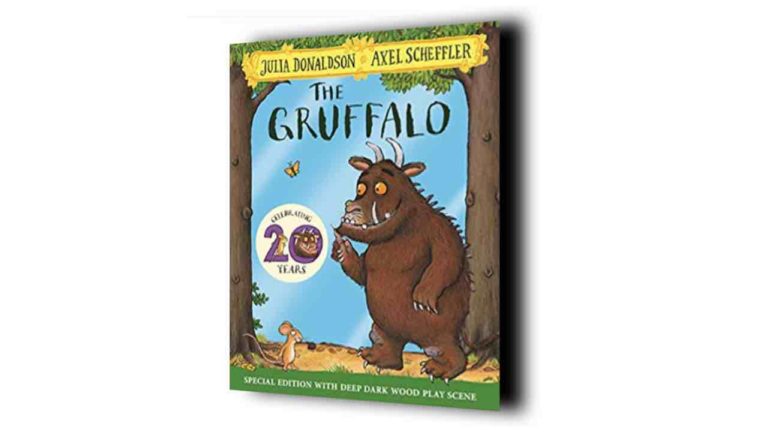In the News
Multiple Benefits and Entertaining – Julia Donaldson: MBE
Posted on October 12, 2011.
I was really pleased to see today that the incredible author Julia Donaldson has received an MBE. It is well deserved and reflects the enjoyment she has given children and adults around the world.
Julia Donaldson has written some of my all time favourite books – The Gruffalo, A Squash and a Squeeze, Monkey Puzzle, The Smartest Giant in Town, Room on the Broom – to name just my very, very favourites!
Personally I love the spoken rhythm, songlike quality of the words, which make the books such a joy to read aloud to any child or group of children. The colourful illustrations by Axel Scheffler complement the words perfectly. In addition the repetition encourages word recognition and phonological awareness.
Just recently Dunst, Meter and Hamby (2011) reported on the relationship between nursery rhymes and early literacy abilities. They found that not only nursery rhymes, but any rhymes supported phonological related skills. They also found that ‘Intervention studies of young children with disabilities indicate, regardless of a child’s particular disability, that rhyme-related interventions are associated with a host of positive literacy outcomes (e.g., Blondel & Miller, 2001; Glenn & Cunningham, 1984; Rogow, 1982)’ (p. 6).
But, for me, the reason why Julia Donaldson’s books are enjoyed so much by adults and children alike is the gentle humour in the stories. How mouse’s ‘made up’ Gruffalo actually appears, much to mouse’s surprise; how the witch is saved from the Dragon in a very unusual manner.
For preschoolers this opens up avenues of open questioning, which can demonstrate empathy, understanding another point of view, expressing feelings (surprised, scared, happy) and understanding right from wrong. For example:
Why were the other animals scared of the Gruffalo?
Why did the butterfly not know what Monkey’s mum would look like?
How do you think the witch felt all by herself?
Why do you think the Giant gave away his beautiful new clothes?
What was the little old lady happy about when all the animals had left?
These are the types of skills that underpin the vital area of personal, social and emotional development of young children.
So there are a multitude of benefits to reading the Gruffalo to your children, from phonics to personal, social and emotional development – and it is enormous fun! What is there not to like?
To paraphrase:
The mouse ate the nut and it tasted good
Blondel, M., & Miller, C. (2001). Movement and rhythm in nursery rhymes in LSF. Sign Language Studies, 2, 24- 61.
Dunst, C., Meter, D. and Hamby, D. (2011) Relationship Between Young Children’s Nursery Rhyme Experiences and Knowledge and Phonological and Print-Related Abilities Center for Early Literacy Learning reviews 2011 Volume 4 Number 1
Glenn, S. M., & Cunningham, C. C. (1984). Nursery rhymes and early language acquisition by mentally handicapped children. Exceptional Children, 51, 72-74.
Rogow, S. (1982). Rhythms and rhymes: Developing communication in very young blind and multi-handicapped children. Child: Care, Health and Development, 8, 249-260.

